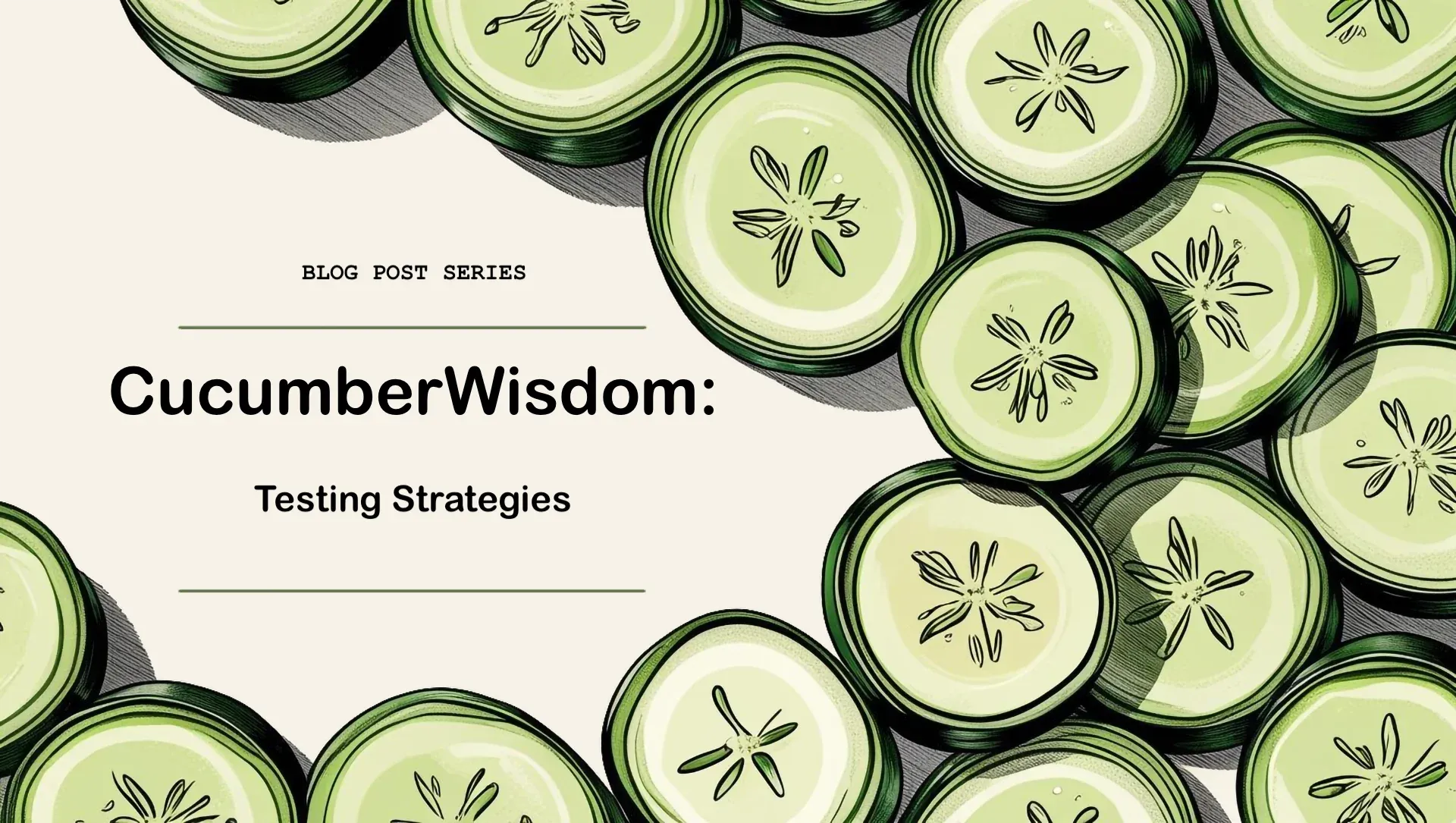Cucumber Wisdom: Testing Strategies
Discover how Cucumber fits into effective testing strategies by combining business-readable scenarios with solid technical tests. Learn how the Testing Pyramid and Testing Iceberg guide balanced test coverage.

Why Testing Strategies Matter
A testing approach isn’t just about the number of tests—it’s about placing the right kinds of tests at the right levels. Too often, teams rely heavily on end-to-end tests, slowing down feedback and making test suites brittle. On the other hand, focusing only on low-level unit tests leaves gaps in how the system is understood by non-technical stakeholders.
An effective strategy balances both worlds: fast, technical tests below the surface, and clear, business-readable tests above.
“In his book, Succeeding with Agile: Software Development Using Scrum, Mike Cohn introduced the concept of the testing pyramid to emphasize that you should have more unit tests than full-stack tests.”
The Testing Pyramid
The pyramid model suggests:
- Base layer: a large number of unit tests that are fast and reliable.
- Middle layer: integration tests that verify components working together.
- Top layer: a smaller set of end-to-end tests that validate system behavior.
This shape ensures fast feedback, maintainability, and broad coverage without overloading the suite with slow, fragile tests.
The Testing Iceberg
Cucumber introduces another metaphor: the Testing Iceberg.
“Imagine the Testing Pyramid became a Testing Iceberg floating in water. Above the water are all the tests that are business readable. Below the water are all the tests that only the technical people on the team can read.”
This highlights an important distinction:
- Above water: scenarios written in business language (Cucumber) that stakeholders can read and trust.
- Below water: unit and integration tests that only developers see, but which provide critical depth and safety.
Together, they ensure the system is tested both for correctness and for shared understanding.
Putting It Into Practice
- Use unit tests as your foundation—fast and plentiful.
- Add integration tests where cross-component behavior matters.
- Keep Cucumber scenarios focused on essential business behaviors.
- Avoid overloading Cucumber with technical checks—it’s for communication, not coverage.
Closing Thought
The most effective test strategy blends clarity with technical strength. With the pyramid as a guide and the iceberg as a reminder, you can build a test suite that not only validates your system but also supports collaboration across the team.
Acknowledgements
This article draws inspiration from The Cucumber for Java Book by Seb Rose, Matt Wynne, and Aslak Hellesøy, and the concept of the Testing Pyramid from Mike Cohn’s Succeeding with Agile. Both perspectives enrich how we think about testing strategies in modern software development.
